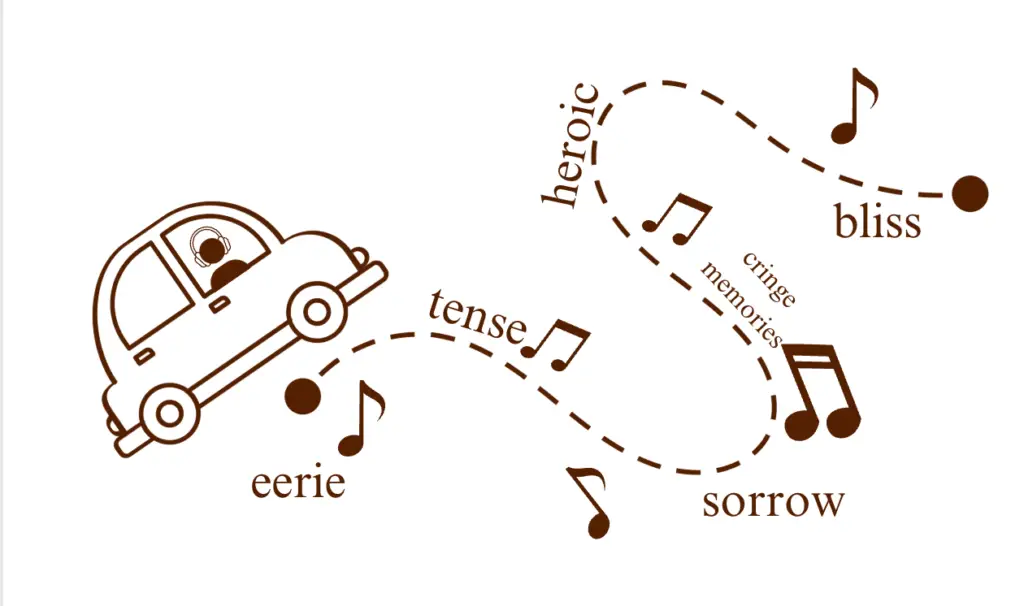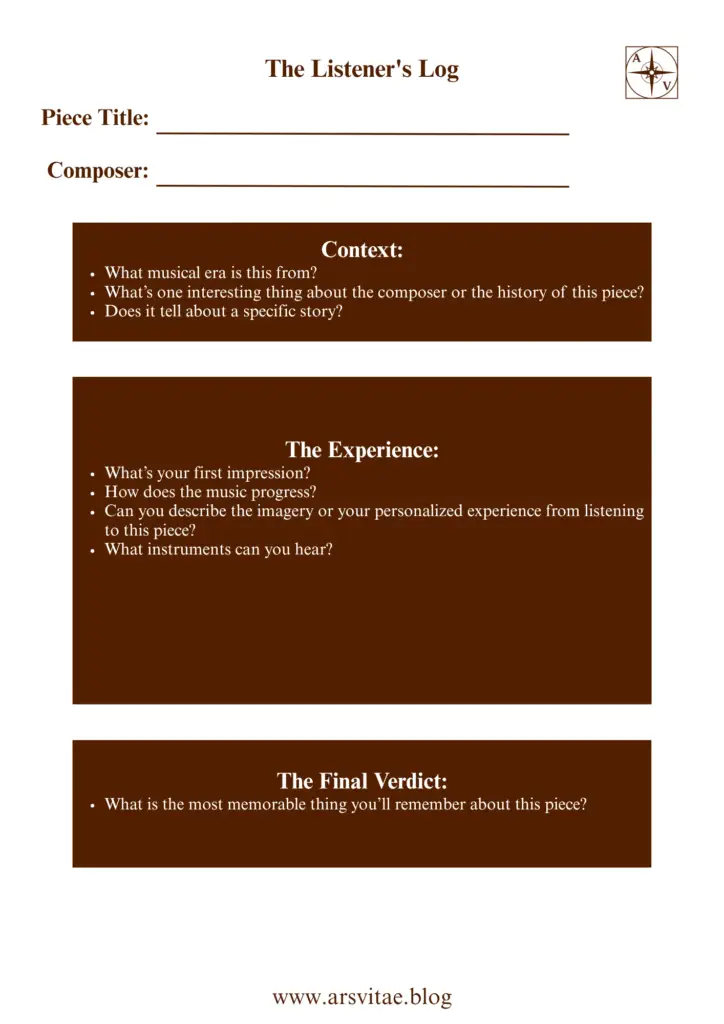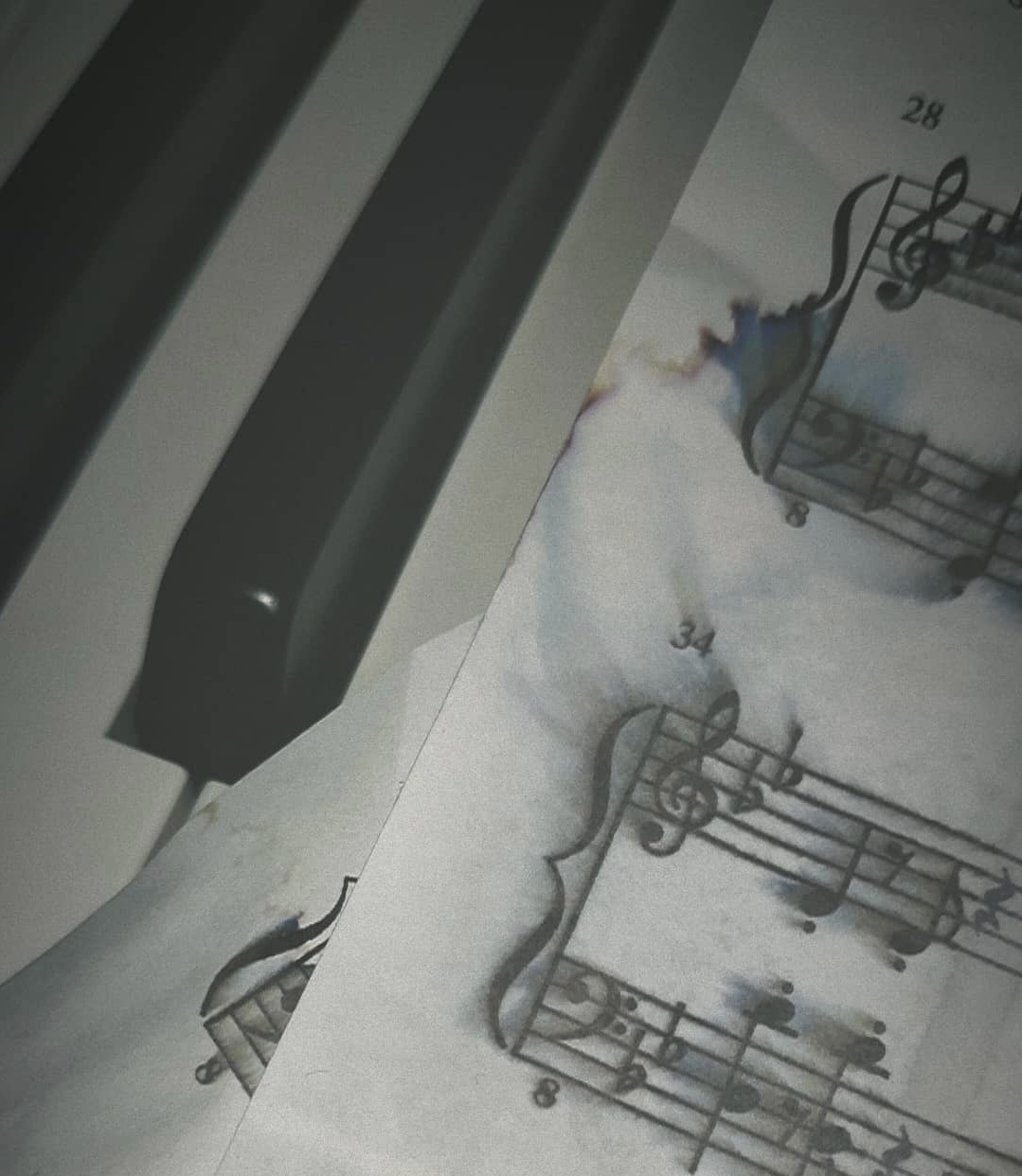In our hedonistic culture, we often envision ourselves acquiring the most impressive car, the perfect partner, the ideal job, a beautiful home, delicious food, and the very best of everything. Naturally, we aspire to have the finest for ourselves. However, how often do we consider immersing ourselves in the ‘best’ of art? The capacity to feel and appreciate art is one of the defining traits that distinguishes us from even the most advanced artificial intelligences.
Art reflects our humanity and demonstrates that the seemingly undefined world around us can have meaning. Thus, by engaging with the ‘best’ of art, we can dive into the depths of our humanity, exploring our emotions and spiritual selves, and perhaps even extending that connection outward.
To narrow our focus, let’s consider music. While I agree that all forms of art hold the potential to enrich our lives, music, in particular, has the power to affect us in mysterious and universal ways. This is the main reason we love music. I hope most of you do relate. I don’t want to get too deep into romanticizing this intro because I already discussed the sheer beauty of music in this post here.
In modern times, music serves as a convenient form of entertainment. We can listen to it while driving, cooking, working, or basically while doing anything. This accessibility is amazing! Unfortunately, it can also lead to a lack of appreciation for music among today’s population.
I firmly believe that music can provide a safe path to amplify the details of our lives and reveal their true colors while still remaining personal. This is especially true for classical music, with its intricate compositions and profound messages. Personally, I find that it allows me to explore my inner feelings from a more nuanced perspective. Sadness is not just sadness, and happiness is not merely happiness; many deeper emotions that are often missing in simplified modern music.
“Many of our passions have no particular cry associated with them, and yet music may express them.”
–Michel-Paul Guy de Chabanon
For instance, when listening to Pergolesi’s version of Stabat Mater Dolorosa, I definitely don’t understand the lyrics, but I can deeply feel the grief of Mary as she mourns the loss of her son to a brutal execution, while also relating that sorrow to my own personal experiences. It’s truly remarkable to experience such a thing without any visual aid. I can be transported through mere sound.
What do I mean by a safe way? You can picture it as being in a car on a safari, driving along a road where you encounter all kinds of wild animals. These animals represent the composer’s ideas, and as you travel further down the road, you’ll also come across creatures that reflect your own personal identity. You can interact with and observe them up close, yet they can’t physically touch you. It’s a beautiful and intimate experience. While all music provides this sense of connection, classical music uniquely captures a wider range of emotions.

That’s why, in this piece of writing, I would like to guide you (especially for those who lack significant experience with classical music) on a journey to explore and listen to classical music, which is often regarded as the peak form of music.
Why do I call it the peak form of music? I am referring to its intricate compositions, the unmatchable emotional depth, and its historical significance in shaping the popular music genre that we know today. Before y’all send me hate comments, I’m not saying that pop music is inferior. Pop music, with its catchy melodies and relatable lyrics, certainly has its own charm and cultural significance. However, classical music offers a richer tapestry of emotions that invites listeners to explore deeper feelings, especially when listened to or played with intention. To put it simply, if you’ve spent 1000 hours of Spotify playtime without exploring classical music, you’re missing out on a vital musical experience!
Here’s the two-part guide. I’ll start with presenting important ideas that hopefully can open your mind, and then I’ll show some practical, actionable steps. Follow it, and I ensure you will start to enjoy classical music!
Part 1: The Important Ideas
1. Classical Music is Not Only For The Elites
Classical music is not just for the wealthy or expert music theorists. To encourage you to explore it, let me share my story. I love classical music, but my appreciation for it didn’t come naturally; I developed this taste over the years. I briefly studied piano in middle school and have been learning the violin for a few years now. You might assume that my parents are part of an elite class or come from a strong musical background, but both assumptions are incorrect. My parents worked hard to afford my piano lessons, and to this day, they don’t even know how to strum a chord on a guitar!
What really sparked my interest was my passion for movies. I spent countless hours watching films and discovered captivating pieces of music along the way, from composers like Hans Zimmer, Joe Hisaishi, and John Williams. As I listened to their scores, I began to explore the ideas behind their music, slowly realizing how beautiful those ideas were. Most of their compositions are instrumental, lacking lyrics, yet they can convey a wide range of complex emotions.
For instance, consider this clip from Jurassic Park (1993). Pay attention to the background music as you watch.
You don’t need to understand music theory to feel the suspense and tension before the dinosaur is revealed. When it finally appears, the music shifts to a more resolved tone, soothing and uplifting, as if it were lifting you up to the clouds.
Through my exploration, I discovered that these modern composers draw inspiration from great classical composers like Bach, Mozart, and Beethoven. These masters employed even more intricate techniques to express their ideas through music, creating complex stories within their pieces. The surprising part is that when you take the time to listen closely, their intricate music remains enjoyable, even if you don’t have a background in music theory.
If you aren’t convinced enough by my first argument, try watching this TED talk.
2. Importance of Attention Span
Attention span is important since most classical music pieces don’t contain danceable beats, and the most crucial thing is that you don’t want to miss the details! Classical music contains musical arguments or ideas through the use of patterns, maybe a certain melody pattern, a certain rhythm pattern, a certain harmony pattern, or maybe a change of tempo, a change of key. It’s not boring if you truly pay attention; there are so many colors that the composers did not need high-budget music videos to make it exciting. Think of it as the ‘slow food’ of music. In a world of 30-second TikTok sounds, listening to a symphony is an act of mindfulness. It’s a mental spa day.
3. Endless Lore
In addition to musical arguments, many pieces have intriguing stories behind them, including historical contexts, composer backgrounds, and other details. Just as Taylor Swift writes a song after each breakup, classical compositions often reflect the composer’s experiences, historical circumstances, and cultural influences. While you can find this information online, I recommend checking out the book The Essential Canon of Classical Music by David Dubal for a bird’s-eye view of major composers and the history of each classical music era.
Part 2: Practical Steps
1. Start with Film Scores
The most accessible gateway to the classical world is likely one you already love: the movies. Pick a good film, pay close attention to the score, and you’ll start to notice the intricate techniques and emotional depth we’ve been talking about.
These scores are beautifully crafted and offer a perfect glimpse of what you can enjoy from full-blown classical compositions. Here are a few places to start:
a. The films that first-handedly use classical music. If you want to see the art form front and center, I highly recommend two films that dive into the lives behind the notes: Amadeus and The Pianist. They are brilliant, unforgettable introductions to the classical world itself.
b. Modern film scores, for instance, anything by Hans Zimmer (films like Inception, Interstellar, or Gladiator), to hear how he builds immense, emotional worlds with sound. Or watch a Ghibli Studios anime movie to appreciate how Joe Hisaishi’s gorgeous melodies can carry a story without a single word. Even the iconic scores from John Williams for films like Star Wars and Schindler’s List are masterclasses in orchestral storytelling.
2. Don’t Overthink
This is the 21st century; classical music is just as accessible as Kendrick Lamar’s diss tracks against Drake. You can just start to find recordings from YouTube or Spotify. You don’t need to use overly expensive high-end audio equipment to start enjoying. I personally use a cheap USB stereo speaker (Logitech S150) and a pair of headphones (Sony WH-1000XM4) when I need to listen to extra details. These are not close to audiophile equipment at all. They just sound great enough and provide enough details for daily use. Of course, you are welcome if you’re able to access better audio equipment. The point is, don’t stress too much about starting; just use the best equipment you have.
3. Build Your First Playlist
Let’s begin by building your first playlist of essential pieces that can introduce you to classical music properly. When I mention essentials, I’m not referring to Beethoven’s Für Elise or Mozart’s Eine Kleine Nachtmusik. While those pieces are well-known, they are often overplayed in modern media. I encourage you to explore a wider range of options, an ocean of possibilities! For instance, Mozart composed around 600 works, Vivaldi wrote over 800, and there are thousands of pieces by numerous other composers waiting to be discovered.
I want to give a shout-out to Oscar Osicki from Inside the Score, his content inspired me to curate this list. You’re free to pick anywhere to start from my recommendation list for beginners, but I do recommend the Musical Craft Showcase category first.
My personal recommendation list:
a. The Grand Narrative
These are the pieces that can paint images in your head. These pieces possess powerful narratives. They are characterized by a clear sense of beginning, development, and resolution, just like a story. The composers paint without a brush. They use sound!
My Picks: Beethoven’s Symphony No. 5, Smetana’s The Moldau, Sibelius’ Finlandia, Beethoven’s Pastoral Symphony (this is my personal favorite; you can easily be immersed in the pastoral picture Beethoven tried to show)
b. Inner Reflections
These are the pieces that serve as personal expressions and meditation. The drama here is not external but mysteriously sensed inside you if you listen to it.
My Picks: Richard Strauss’ Morgen, Mahler’s Adagietto from Symphony No. 5, Tchaikovsky’s Symphony No. 6, Wagner’s Liebestod, Massenet’s Meditation from Thais
c. Musical Craft Showcase
This group of pieces really plays with its own ideas, showing off clever contrasts and cool forms. For instance, a simple tune might start things off, then keep reappearing, but each time it’s more developed and has richer harmonies as the music unfolds.
My picks: Liszt’s Liebestraum No. 3, Shostakovich Piano Concerto No. 2, Britten’s Young Person’s Guide to the Orchestra
d. Innovative Pieces
These pieces clearly demonstrate that classical music is not boring. You can innovate while still maintaining a proper structure. Impressionists like Debussy exemplified this beautifully. Gershwin’s Rhapsody in Blue is another fantastic example, seamlessly fusing jazz with classical elements while remaining distinctly structured.
My picks: Gershwin’s Rhapsody in Blue, Debussy’s La Mer
e. Spiritual and Theatrical
This final section explores the overwhelming power of the human voice when combined with the full force of the symphony orchestra. The kind of music written for public spectacles, whether for opera or deep devotion in sacred choral works. In these compositions, the music serves to interpret and amplify pre-existing texts, transforming the composer into a dramatist or theologian who uses sound.
My picks: Mozart’s Lacrimosa, Puccini’s Nessun Dorma, Bach’s “Kyrie” from Mass in B Minor
4. Listen Attentively
After selecting a piece, it’s time to listen. First, turn off your phone notifications, and if this is your first time hearing a particular piece, grab a notebook or a piece of paper. Use this simple framework. I created this to enhance your listening experience, which I call The Listener’s Log.

This log will help you listen actively, stay engaged, and avoid falling into ‘boredom’ traps. Start by writing down the title of the piece and the name of its composer.
The first section of the log is called Context. You can fill this out with a quick search on Google or any reliable source, and it shouldn’t take more than seven minutes. This information is valuable for sparking your interest and keeping you engaged. Begin by noting the musical era (e.g., Baroque, Romantic, etc.), then include any interesting facts about the piece, perhaps it was originally performed for a tyrannical king or composed in just a week. You can also jot down what story or premise the composer intended to convey through the piece.
The second part is Experience, where you can document your observations during and after listening. Start by describing your initial impression and mood. It could be as simple as, “Wow! Such a quiet opening. Very mysterious.” Then, note how the music progresses. Don’t overthink it; you don’t need to be an expert. You might write, “It started slowly, gradually becoming louder and faster, then ended with a slow pace again,” or “It feels so sad, with moments of light and happiness whenever the violin plays.” Feel free to mention the instruments you hear, and remember, it’s perfectly fine if you don’t identify them, because this log is a guide, not a test.
The final part is your Final Verdict. Simply write a sentence about the most memorable aspect of the piece. For example: “The middle section felt so blissful.”
5. Expand and Explore
As you gain more listening experience, you may find yourself intrigued to learn more about classical music and eager to add new pieces to your playlist. You’ll develop a taste for specific classical genres and begin to notice beautifully utilized patterns and colors you’ve never encountered before. This is your personal journey. If you have access to a local orchestra, I highly recommend attending a live classical music concert. Even a simple performance can be incredibly rewarding to experience in person.
Thank you for sticking with me until the end of this guide. I hope you find it useful. If you’d like to discuss anything further, feel free to reach out to me through the Instagram contact on this blog’s homepage.
What’s the first classical piece that ever wowed you? Share it in the comments below!
Key Terms to Know
Art Music: Music that is composed with a focus on artistic or intellectual qualities, as opposed to popular or folk music. It refers to music that is created with a high level of artistic consideration, meant for careful listening rather than, say, dancing or background noise.
Piece: This is the most straightforward term of all! It’s simply a general name for any single musical work, long or short.
Opus (Op.): This is Latin for “work.” Composers’ works are often cataloged with an opus number, usually assigned in the order they were published. For example, Beethoven’s Symphony No. 5 is also known as “Op. 67.” It’s like a serial number that helps identify a specific piece.
Rhythm: This is the pulse and pattern of the music over time. It’s the element that makes you want to tap your foot. Is the pattern long and flowing, or short, sharp, and energetic? That’s the rhythm at work.
Tempo: Simply put, tempo is the speed of the music. Is it fast (often described with Italian words like Allegro), slow (Adagio), or somewhere in between? The tempo sets the fundamental mood of a piece.
Melody: A series of notes arranged in a musically meaningful succession, forming the principal component of a musical phrase or passage. This is usually the one that you perceive as the catchy part.
Musical Phrase: A brief segment of music that forms a single melodic line or idea, often similar in structure to a sentence or clause in language. A musical phrase typically has a clear beginning, middle, and end, and conveys a sense of completeness or coherence within the larger context of the piece.
Harmony: If you have multiple notes playing at the same time, you have harmony. Think of it as the musical “color” or texture. Harmony is what makes a piece sound happy and bright (major key) or sad and somber (minor key). It’s the rich soundscape that exists underneath the main tune.
Key: This is the “home base” for a piece of music. It’s a set of notes that the harmony and melody are centered around. You’ll often see it in a title, like “Symphony in C Minor.” This tells musicians (and informed listeners) what the central harmonic world of the piece will be.
Orchestra: A large group of musicians playing together. A modern symphony orchestra typically features four main sections: strings (violins, cellos, etc.), woodwinds (flutes, clarinets), brass (trumpets, trombones), and percussion (drums, cymbals).
Symphony: This is a large-scale piece of music written for a full orchestra. It’s usually a long work, typically divided into four distinct sections called movements. Think of it as the musical equivalent of a novel.
Sonata: A musical composition for one or more solo instruments, typically in three or four movements.
Musical Argument: This is a slightly more advanced but incredibly useful concept. Think of it as the “plot” of the music. Composers introduce musical ideas (melodies, rhythms), develop them, create tension between them, and eventually resolve them. Listening for this “argument” or “narrative” is one of the most rewarding ways to engage with a piece.


Leave a Reply